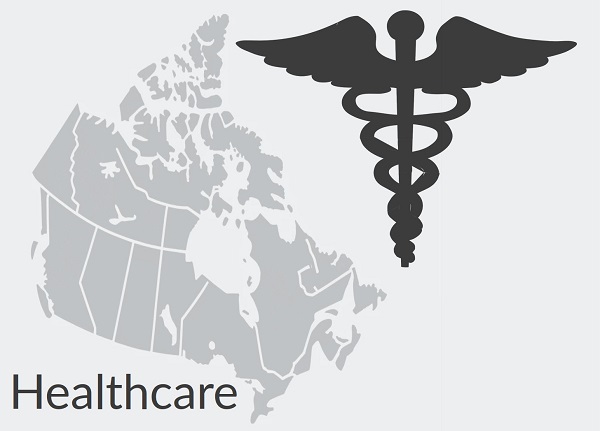Business
The Health Research Funding Scandal Costing Canadians Billions is Parading in Plain View

Why Can’t We See the Canadian Institutes for Health Research-Funded Research We Pay For?
Right off the top I should acknowledge that a lot of the research funded by the Canadian Institutes for Health Research (CIHR) is creative, rigorous, and valuable. No matter which academic category I looked at during my explorations, at least a few study titles sparked a strong “well it’s about time” reaction.
But two things dampen my enthusiasm:
- Precious few of the more than 39,000 studies funded by CIHR since 2011 are available to the public. We’re generally permitted to see no more than brief and incomplete descriptions – and sometimes not even that.
- There’s often no visible evidence that the research ever actually took place. Considering how more than $16 billion in taxpayer funds has been spent on those studies over the past 13 years, that’s not a good thing.
If you’ve been reading The Audit for a while, you know that I’ll often identify systems that appear vulnerable to abuse. As a rule though, I’m reluctant to invoke the “s” word. But here’s one place where I can think of no better description: the vacuum where CIHR compliance and enforcement should be is a national scandal.
Keep these posts coming: subscribe to The Audit.
I’ve touched on these things before. And even in that earlier post I acknowledged how:
…as a country, we have an interest in investing in industry sectors where there’s a potential for high growth and where releasing proprietary secrets can be counter productive.
So we shouldn’t expect access to the full results of every single study. But that’s surely not true for the majority of research. And there’s absolutely no reason that CIHR shouldn’t provide evidence that something (anything!) productive was actually done with our money.
Because a well-chosen example can sometimes tell the story better than huge numbers, I’ll focus on one particular study in just a moment. But for context, here are some huge numbers. What follows is an AI-powered breakdown by topic of all 39,751 research grants awarded by CIHR since 2011:
Those numbers shouldn’t be taken as anything close to authoritative. The federal government data doesn’t provide even minimal program descriptions for many of the grants it covers. And many descriptions that are there contain meaningless boilerplate text. That’s why the “Other – Uncategorized” category represents 72 percent of all award dollars.
Ok. Let’s get to our in-the-weeds-level example. In March 2016, Greta R. Bauer and Margaret L. Lawson (principal investigators) won a $1,280,540 grant to study “Transgender youth in clinical care: A pan-Canadian cohort study of medical, social and family outcomes”.
Now that looks like vital and important research. This is especially true in light of recent bans on clinical transgender care for minors in many European countries following the release of the U.K.’s Cass report. Dr. Cass found that such treatment involved unacceptable health risks when weighed against poorly defined benefits.
A website associated with the Bauer-Lawson study (transyouthcan.ca) provides a brief update:
As of December of 2021, we have completed all of our planned 2-year follow up data collection. We want to say thanks so much to all our participants who have continued to share their information with us over these past years! We have been hard at work turning data into research results.
And then things get weird. That page leads to a link to another page containing study results, but that one doesn’t load due to an internal server error.
Before we move on, I should note that I come across a LOT of research-related web pages on potentially controversial topics that suddenly go off-line or unexpectedly retire behind pay walls. Those could, of course, just be a series of unfortunate coincidences. But I’ve seen so many such coincidences that it’s beginning to look more like a pattern.
The good news is that earlier versions of those lost pages are nearly always available through the Internet Archive’s WayBackMachine. And frankly, the stuff I find in those earlier versions is often much more – educational – than whatever intentional updates would show me.
In the case of transyouthcan.ca, archived versions included a valid link to a brief PDF document addressing external stressors (which were NOT the primary focus of the original grant application). That PDF includes an interesting acknowledgment:
This project is being paid for by a grant from the Canadian Institutes of Health Research (CIHR). This study is being done by a team of gender-affirming doctors and researchers who have many years of experience doing community-based trans research. Our team includes people who are also parents of trans children, trans adults, and allied researchers with a long history of working to support trans communities.
As most of the participants appear to have financial and professional interests in the research outcome, I can’t avoid wondering whether there might be at least the appearance of bias.
In any case, that’s where the evidence trail stopped. I couldn’t find any references to study results or even to the publication of a related academic paper. And it’s not like the lead investigators lack access to journals. Greta Bauer, for example, has 79 papers listed on PubMed – but none of them related directly to this study topic.
What happened here? Did the authors just walk off with $1.2 million of taxpayer funding? Did they do the research but then change their minds about publishing when the results came in because they don’t fit a preferred narrative?
But the darker question is why no one at CIHR appears to be even mildly curious about this story – and about many thousands of others that might be out there. Who’s in charge?
Keep these posts coming: subscribe to The Audit.
Business
Most Canadians say retaliatory tariffs on American goods contribute to raising the price of essential goods at home

- 77 per cent say Canada’s tariffs on U.S. products increase the price of consumer goods
- 72 per cent say that their current tax bill hurts their standard of living
A new MEI-Ipsos poll published this morning reveals a clear disconnect between Ottawa’s high-tax, high-spending approach and Canadians’ level of satisfaction.
“Canadians are not on board with Ottawa’s fiscal path,” says Samantha Dagres, communications manager at the MEI. “From housing to trade policy, Canadians feel they’re being squeezed by a government that is increasingly an impediment to their standard of living.”
More than half of Canadians (54 per cent) say Ottawa is spending too much, while only six per cent think it is spending too little.
A majority (54 per cent) also do not believe federal dollars are being effectively allocated to address Canada’s most important issues, and a similar proportion (55 per cent) are dissatisfied with the transparency and accountability in the government’s spending practices.
As for their own tax bills, Canadians are equally skeptical. Two-thirds (67 per cent) say they pay too much income tax, and about half say they do not receive good value in return.
Provincial governments fared even worse. A majority of Canadians say they receive poor value for the taxes they pay provincially. In Quebec, nearly two-thirds (64 per cent) of respondents say they are not getting their money’s worth from the provincial government.
Not coincidentally, Quebecers face the highest marginal tax rates in North America.
On the question of Canada’s response to the U.S. trade dispute, nearly eight in 10 Canadians (77 per cent) agree that Ottawa’s retaliatory tariffs on American products are driving up the cost of everyday goods.
“Canadians understand that tariffs are just another form of taxation, and that they are the ones footing the bill for any political posturing,” adds Ms. Dagres. “Ottawa should favour unilateral tariff reduction and increased trade with other nations, as opposed to retaliatory tariffs that heap more costs onto Canadian consumers and businesses.”
On the issue of housing, 74 per cent of respondents believe that taxes on new construction contribute directly to unaffordability.
All of this dissatisfaction culminates in 72 per cent of Canadians saying their overall tax burden is reducing their standard of living.
“Taxpayers are not just ATMs for government – and if they are going to pay such exorbitant taxes, you’d think the least they could expect is good service in return,” says Ms. Dagres. “Canadians are increasingly distrustful of a government that believes every problem can be solved with higher taxes.”
A sample of 1,020 Canadians 18 years of age and older was polled between June 17 and 23, 2025. The results are accurate to within ± 3.8 percentage points, 19 times out of 20.
The results of the MEI-Ipsos poll are available here.
* * *
The MEI is an independent public policy think tank with offices in Montreal, Ottawa, and Calgary. Through its publications, media appearances, and advisory services to policymakers, the MEI stimulates public policy debate and reforms based on sound economics and entrepreneurship.
Business
B.C. premier wants a private pipeline—here’s how you make that happen

From the Fraser Institute
By Julio Mejía and Elmira Aliakbari
At the federal level, the Carney government should scrap several Trudeau-era policies including Bill C-69 (which introduced vague criteria into energy project assessments including the effects on the “intersection of sex and gender with other identity factors”)
The Eby government has left the door (slightly) open to Alberta’s proposed pipeline to the British Columbia’s northern coast. Premier David Eby said he isn’t opposed to a new pipeline that would expand access to Asian markets—but he does not want government to pay for it. That’s a fair condition. But to attract private investment for pipelines and other projects, both the Eby government and the Carney government must reform the regulatory environment.
First, some background.
Trump’s tariffs against Canadian products underscore the risks of heavily relying on the United States as the primary destination for our oil and gas—Canada’s main exports. In 2024, nearly 96 per cent of oil exports and virtually all natural gas exports went to our southern neighbour. Clearly, Canada must diversify our energy export markets. Expanded pipelines to transport oil and gas, mostly produced in the Prairies, to coastal terminals would allow Canada’s energy sector to find new customers in Asia and Europe and become less reliant on the U.S. In fact, following the completion of the Trans Mountain Pipeline expansion between Alberta and B.C. in May 2024, exports to non-U.S. destinations increased by almost 60 per cent.
However, Canada’s uncompetitive regulatory environment continues to create uncertainty and deter investment in the energy sector. According to a 2023 survey of oil and gas investors, 68 per cent of respondents said uncertainty over environmental regulations deters investment in Canada compared to only 41 per cent of respondents for the U.S. And 59 per cent said the cost of regulatory compliance deters investment compared to 42 per cent in the U.S.
When looking at B.C. specifically, investor perceptions are even worse. Nearly 93 per cent of respondents for the province said uncertainty over environmental regulations deters investment while 92 per cent of respondents said uncertainty over protected lands deters investment. Among all Canadian jurisdictions included in the survey, investors said B.C. has the greatest barriers to investment.
How can policymakers help make B.C. more attractive to investment?
At the federal level, the Carney government should scrap several Trudeau-era policies including Bill C-69 (which introduced vague criteria into energy project assessments including the effects on the “intersection of sex and gender with other identity factors”), Bill C-48 (which effectively banned large oil tankers off B.C.’s northern coast, limiting access to Asian markets), and the proposed cap on greenhouse gas (GHG) emissions in the oil and gas sector (which will likely lead to a reduction in oil and gas production, decreasing the need for new infrastructure and, in turn, deterring investment in the energy sector).
At the provincial level, the Eby government should abandon its latest GHG reduction targets, which discourage investment in the energy sector. Indeed, in 2023 provincial regulators rejected a proposal from FortisBC, the province’s main natural gas provider, because it did not align with the Eby government’s emission-reduction targets.
Premier Eby is right—private investment should develop energy infrastructure. But to attract that investment, the province must have clear, predictable and competitive regulations, which balance environmental protection with the need for investment, jobs and widespread prosperity. To make B.C. and Canada a more appealing destination for investment, both federal and provincial governments must remove the regulatory barriers that keep capital away.
-

 COVID-195 hours ago
COVID-195 hours agoFDA requires new warning on mRNA COVID shots due to heart damage in young men
-

 Business3 hours ago
Business3 hours agoCarney’s new agenda faces old Canadian problems
-

 Indigenous4 hours ago
Indigenous4 hours agoInternal emails show Canadian gov’t doubted ‘mass graves’ narrative but went along with it
-

 Bruce Dowbiggin6 hours ago
Bruce Dowbiggin6 hours agoEau Canada! Join Us In An Inclusive New National Anthem
-

 Bruce Dowbiggin2 days ago
Bruce Dowbiggin2 days agoThe Covid 19 Disaster: When Do We Get The Apologies?
-

 Media2 days ago
Media2 days agoCBC journalist quits, accuses outlet of anti-Conservative bias and censorship
-

 Alberta2 days ago
Alberta2 days agoFourteen regional advisory councils will shape health care planning and delivery in Alberta
-

 Business2 days ago
Business2 days agoCarney government should recognize that private sector drives Canada’s economy









